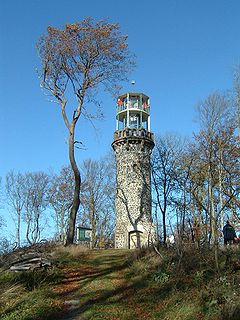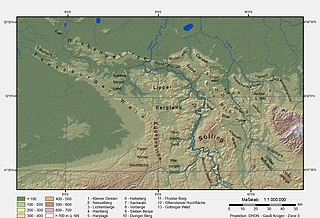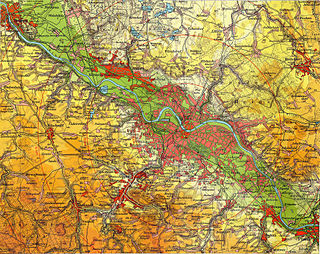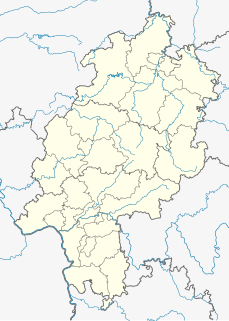The East Hesse Depression is one of two fault troughs trending from north-northeast to south-southwest in the state of Hesse, Germany. Like the West Hesse Depression, it is a series of separate depressions that form a natural corridor and have been an important historical trade route. [1]
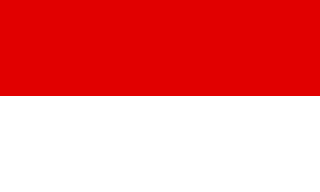
Hesse or Hessia, officially the State of Hesse, is a federal state (Land) of the Federal Republic of Germany, with just over six million inhabitants. The state capital is Wiesbaden; the largest city is Frankfurt am Main.

Germany, officially the Federal Republic of Germany, is a country in Central and Western Europe, lying between the Baltic and North Seas to the north, and the Alps to the south. It borders Denmark to the north, Poland and the Czech Republic to the east, Austria and Switzerland to the south, France to the southwest, and Luxembourg, Belgium and the Netherlands to the west.

The West Hesse Depression is part of the West Hesse Highlands and Lowlands region in the north of the German state of Hesse. Like the East Hesse Depression, it is a series of separate depressions that form a natural corridor and have been an important historical trade route.
The corridor follows the valley of the Kinzig passing through Hersfeld, Fulda and Bebra, then continues down the Fulda valley to Kassel and finally runs along the course of the Leine to Göttingen. [1] This trough is bounded to the west by the Vogelsberg-Meißner Axis [1] or Hessian Central Uplands [2] and to the east by the Thuringian Highland and Rhön Mountains.

The Kinzig is a river, 87 kilometres long, in southern Hesse, Germany. It is a right tributary of the Main. Its source is in the Spessart hills at Sterbfritz, near Schlüchtern. The Kinzig flows into the Main in Hanau. The Main-Kinzig-Kreis (district) was named after the river. The towns along the Kinzig are Schlüchtern, Steinau an der Straße, Bad Soden-Salmünster, Gelnhausen, and Hanau. The Kinzig is first recorded in 815 A.D. as Chinzicha.
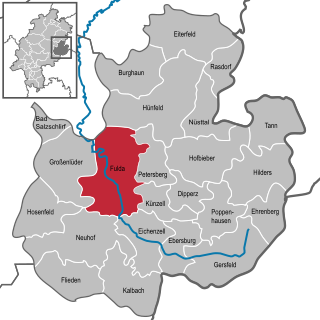
Fulda is a city in Hesse, Germany; it is located on the river Fulda and is the administrative seat of the Fulda district (Kreis). In 1990, the town hosted the 30th Hessentag state festival.
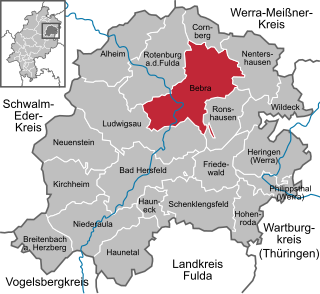
Bebra is a small town in Hersfeld-Rotenburg district in northeastern Hesse, Germany.


